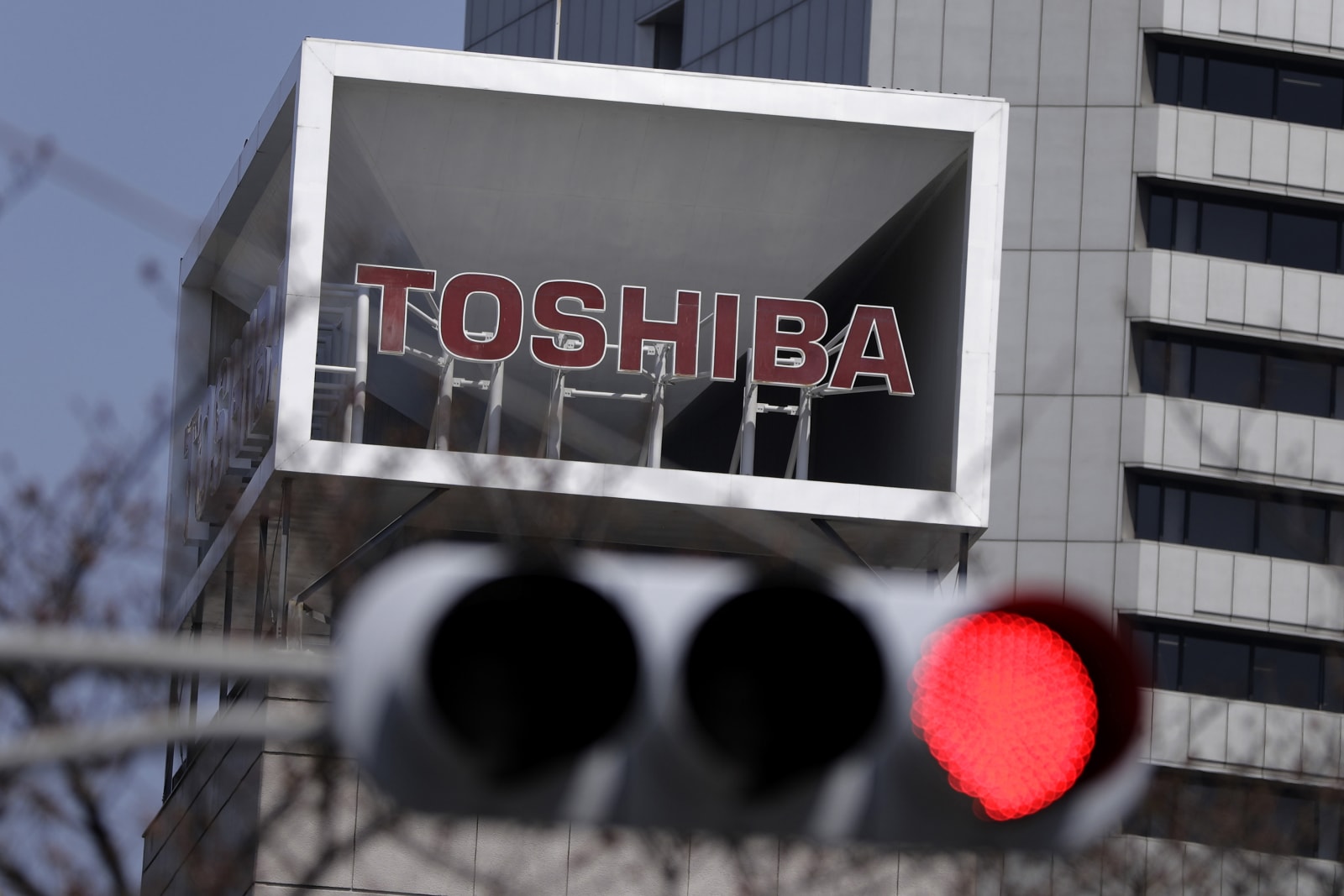Tag Archives: nand
Will QLC SSDs make hard drives extinct?
Toshiba’s chip drama ends with sale to a financial group
 The long-running bidding war over Toshiba's flash memory business has effectively come to an end... and the winner probably isn't who you expected. Toshiba has agreed to sell its NAND division to a group led by the private equity firm Bain Capital f...
The long-running bidding war over Toshiba's flash memory business has effectively come to an end... and the winner probably isn't who you expected. Toshiba has agreed to sell its NAND division to a group led by the private equity firm Bain Capital f...
Toshiba’s latest SSD tech squeezes 128GB onto a tinier chip
Apple and Amazon want a stake in Toshiba’s memory business
Samsung unveils first SSDs with 3D V-NAND memory, but only for enterprise
Well, that was quick. Samsung said it was producing the world's first 3D vertical NAND memory just a week ago, and it has already started building the first SSDs based on that memory. Unfortunately, they're not meant for the enthusiast crowd: the new 480GB and 960GB drives are instead designed for enterprise-class servers, where V-NAND's blend of high capacity and reliability makes the most sense. Don't be too forlorn, however. Samsung promises that the new memory will eventually reach PC-oriented SSDs, which could bring spacious flash storage to a much wider audience.
Source: Samsung
Samsung ships first 3D vertical NAND flash, defies memory scaling limits
The main challenge in producing higher-capacity flash storage is one of scale -- as density goes up, so does cell interference and the chances of a breakdown. Samsung may have overcome that barrier (if temporarily) by mass-producing the first 3D vertical NAND memory, or V-NAND. Instead of putting memory cells on a conventional 2D plane, the company reworked its long-serving Charge Trap Flash technology to create a 3D cell structure with more breathing room. The result is flash that improves both reliability and speed at higher densities; Samsung claims that the new technology is 2-10X more reliable than its ancestors, and twice as quick at writing data. The initial V-NAND chip offers a 128-gigabit (16GB) capacity that we've seen before, but its underlying technique should scale quickly when a chip can include as many as 24 stacked cell layers. Although Samsung hasn't named the first devices with V-NAND inside, we won't be surprised if our next phone or SSD is particularly spacious.
Source: Samsung
Samsung ships first 3D vertical NAND flash, defies memory scaling limits
The main challenge in producing higher-capacity flash storage is one of scale -- as density goes up, so does cell interference and the chances of a breakdown. Samsung may have overcome that barrier (if temporarily) by mass-producing the first 3D vertical NAND memory, or V-NAND. Instead of putting memory cells on a conventional 2D plane, the company reworked its long-serving Charge Trap Flash technology to create a 3D cell structure with more breathing room. The result is flash that improves both reliability and speed at higher densities; Samsung claims that the new technology is 2-10X more reliable than its ancestors, and twice as quick at writing data. The initial V-NAND chip offers a 128-gigabit (16GB) capacity that we've seen before, but its underlying technique should scale quickly when a chip can include as many as 24 stacked cell layers. Although Samsung hasn't named the first devices with V-NAND inside, we won't be surprised if our next phone or SSD is particularly spacious.
Source: Samsung
Toshiba to release 4K-ready, 160MB/s CompactFlash memory cards
Toshiba will launch its Exceria Pro series of CompactFlash cards into the Japanese market tomorrow with 160MB/s read speeds and 150MB/s write speeds. The company claims the 32GB and 64GB models are the fastest CF cards you can get now, thanks to the UDMA7 protocol combined with its own NAND flash memory and custom firmware. As such, it's certified them to the "video performance guarantee profile 2" (VPG-65) standard, meaning they're guaranteed to sustain 65MB/s, which Toshiba says will support many CF-equipped 4K cameras on the market. Obviously, HD and RAW still shooters using pro DSLR models like Canon's 5D Mark III and the Nikon D800 won't have to sweat the frames-per-second, either. There's no word on US availability or pricing, but we should know more when they hit Japanese shops on April 27th.
Samsung puts 128-gigabit 3-bit cell flash into production, plans to build more memory cards

Flash memory advancements usually sing the same tune: faster, smaller and high-density. Improve one of these attributes, and you've go the makings of a better chip on your hands. Samsung is focusing on the latter, announcing the mass production of its 10 nanometer 128-gigabit three-bit multi-level-cell NAND flash. That mouthful translates into flash chips with more memory per cell in a small form factor. Sammy says the new chip is capable of 400Mbps, and claims the highest density in the industry. The new silicon will be used to expand the company's supply of 128GB memory cards and high-volume solid state drives. It's also well positioned to be a better part for devices with embedded NAND storage, which Samsung hopes will keep it competitive. You'll find Samsung's announcement and all the granular details after the break.
Source: Samsung Tomorrow


